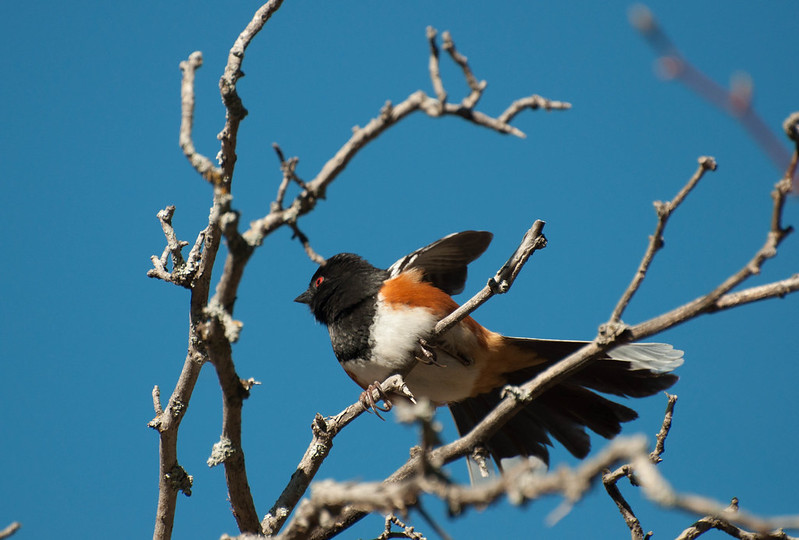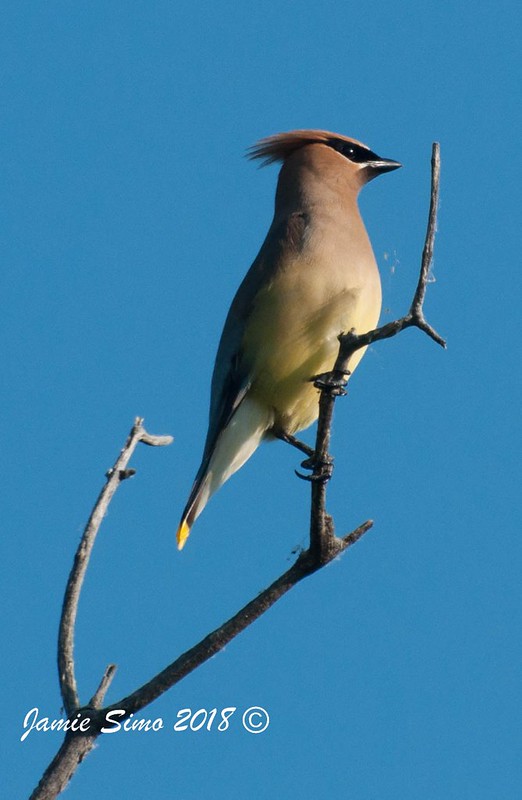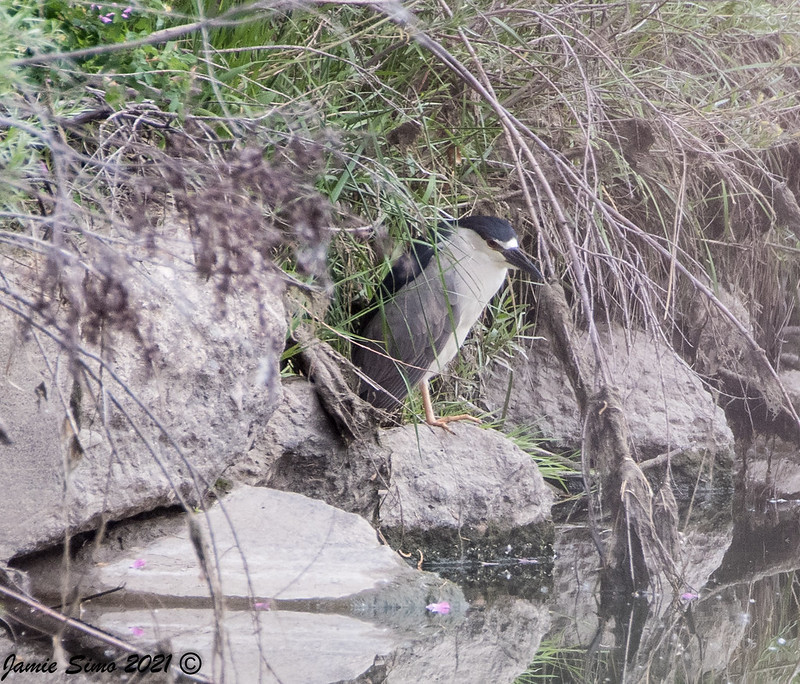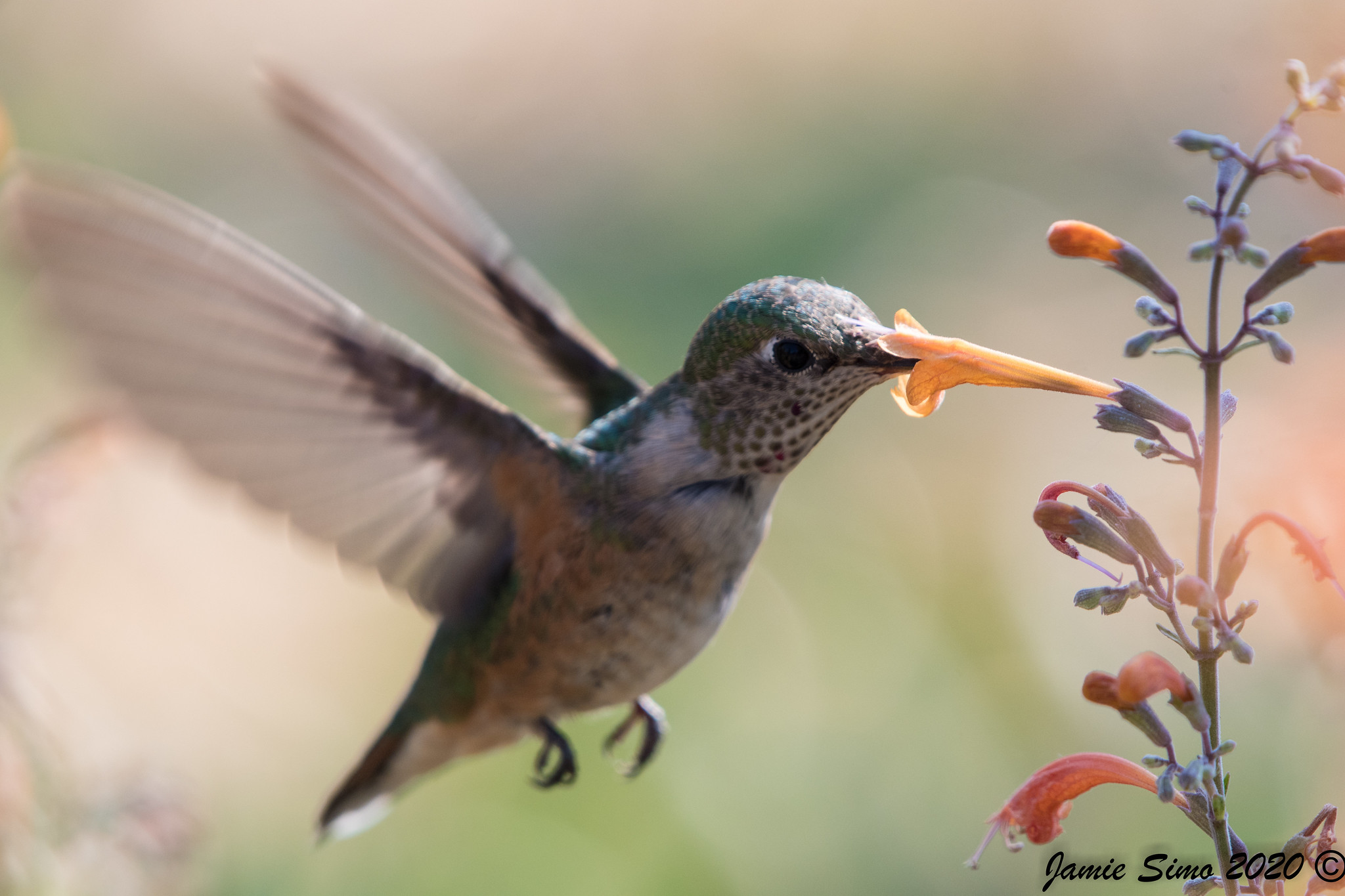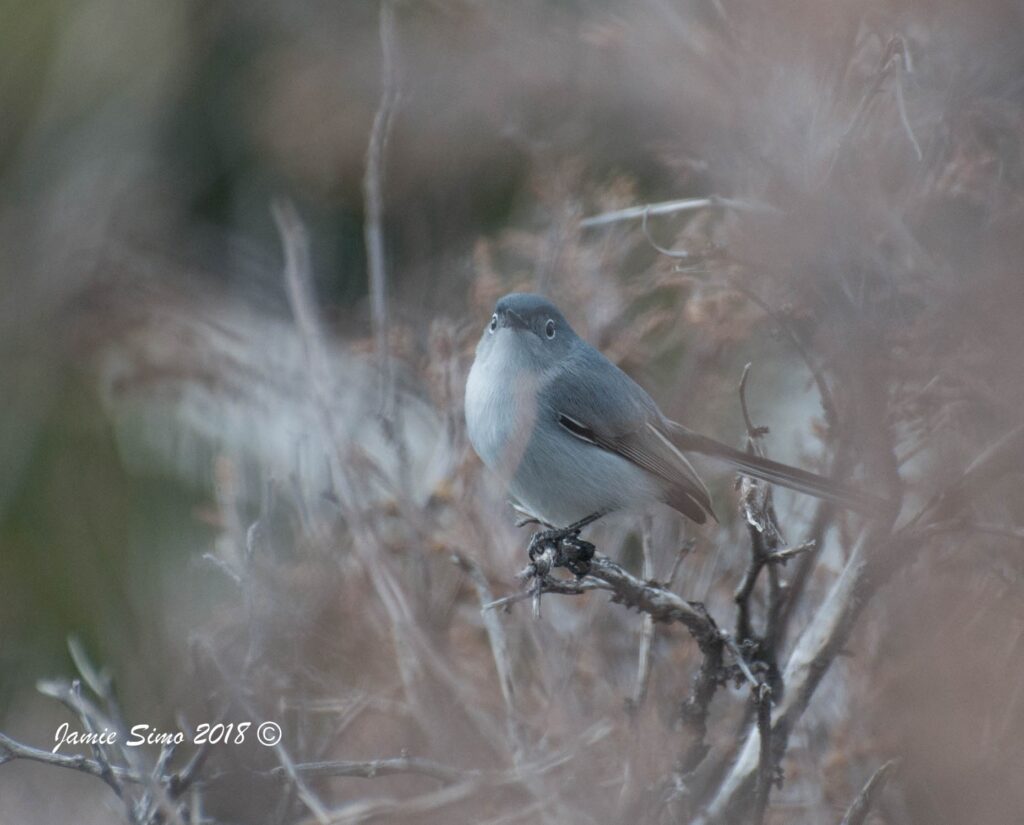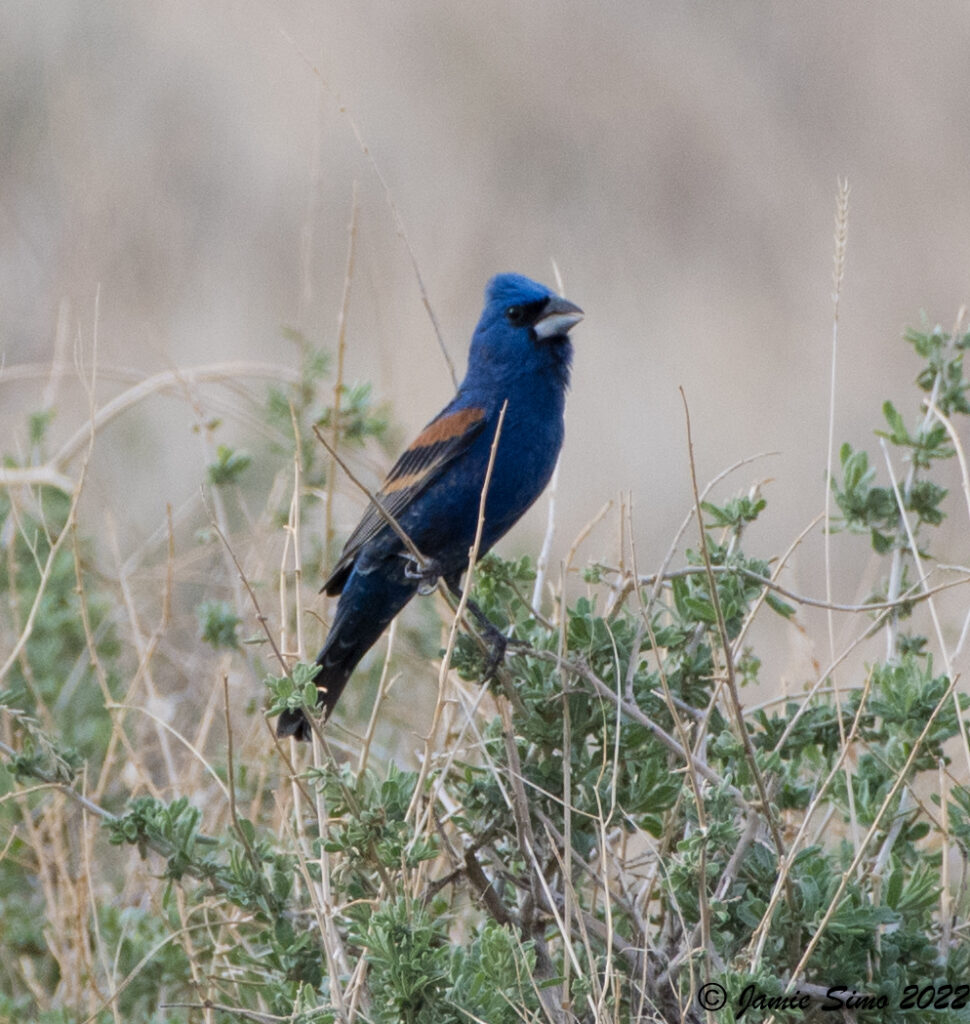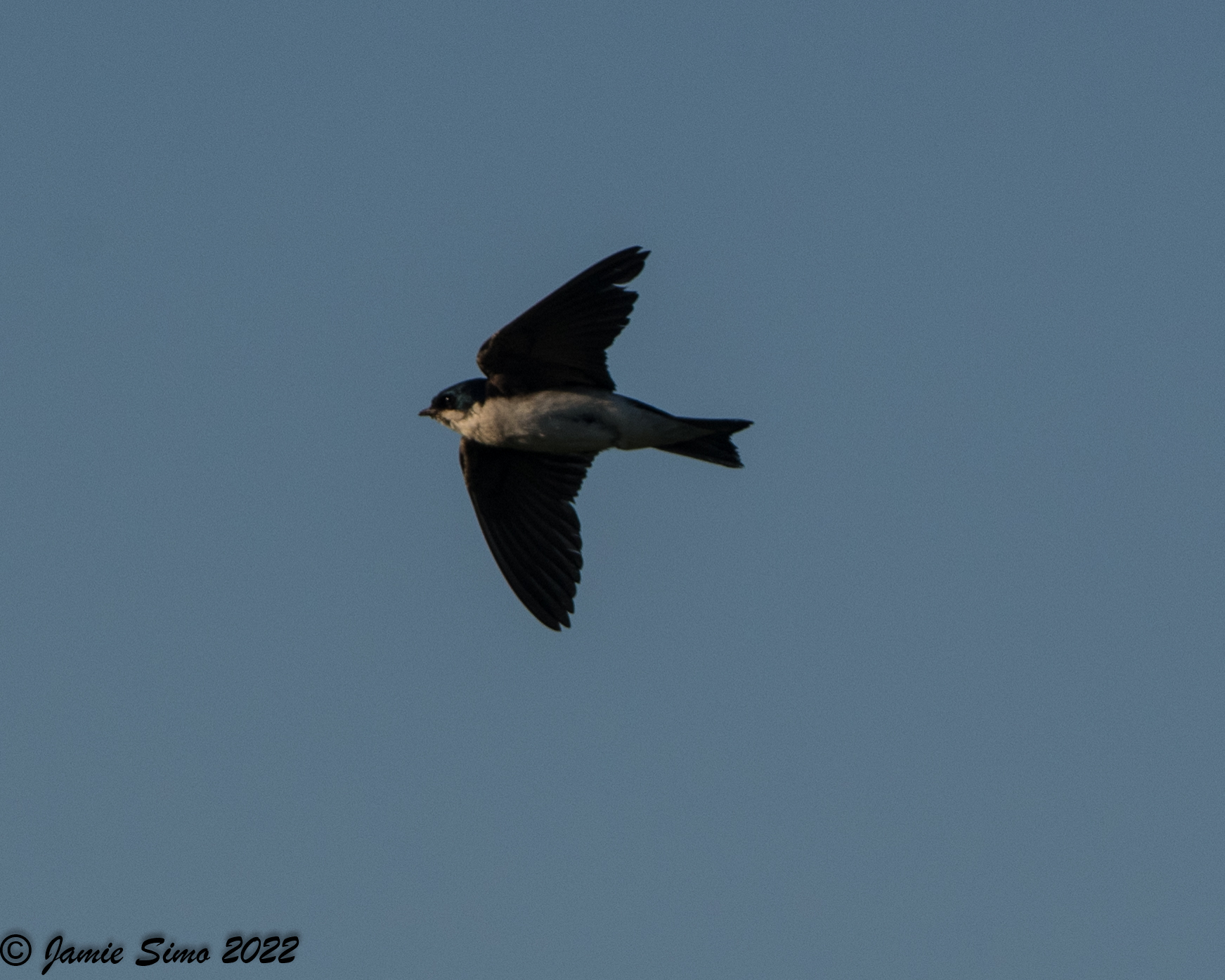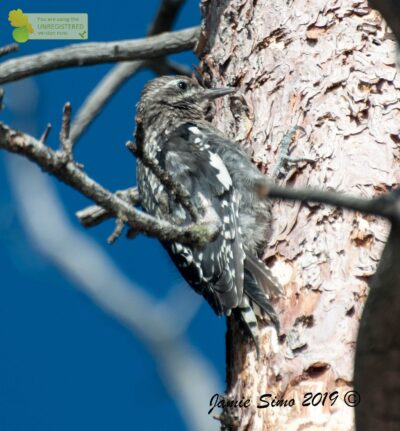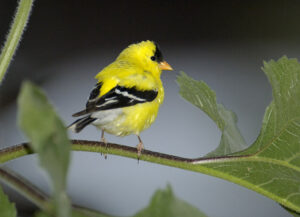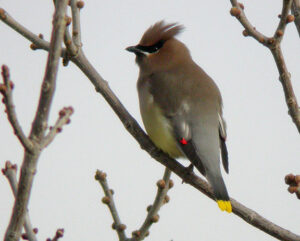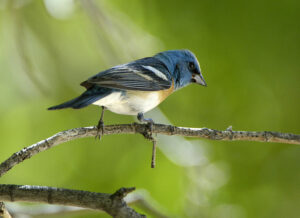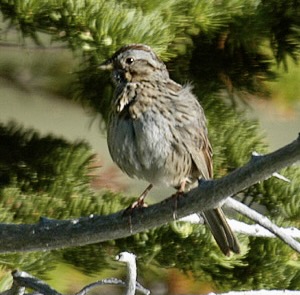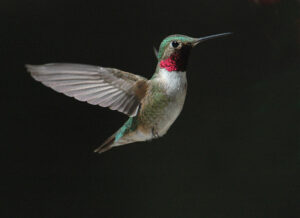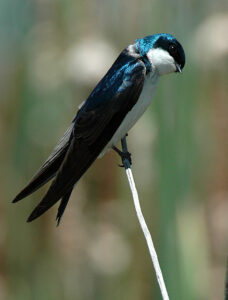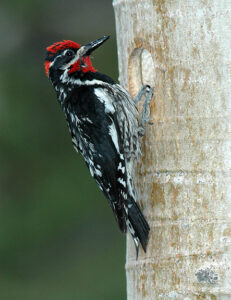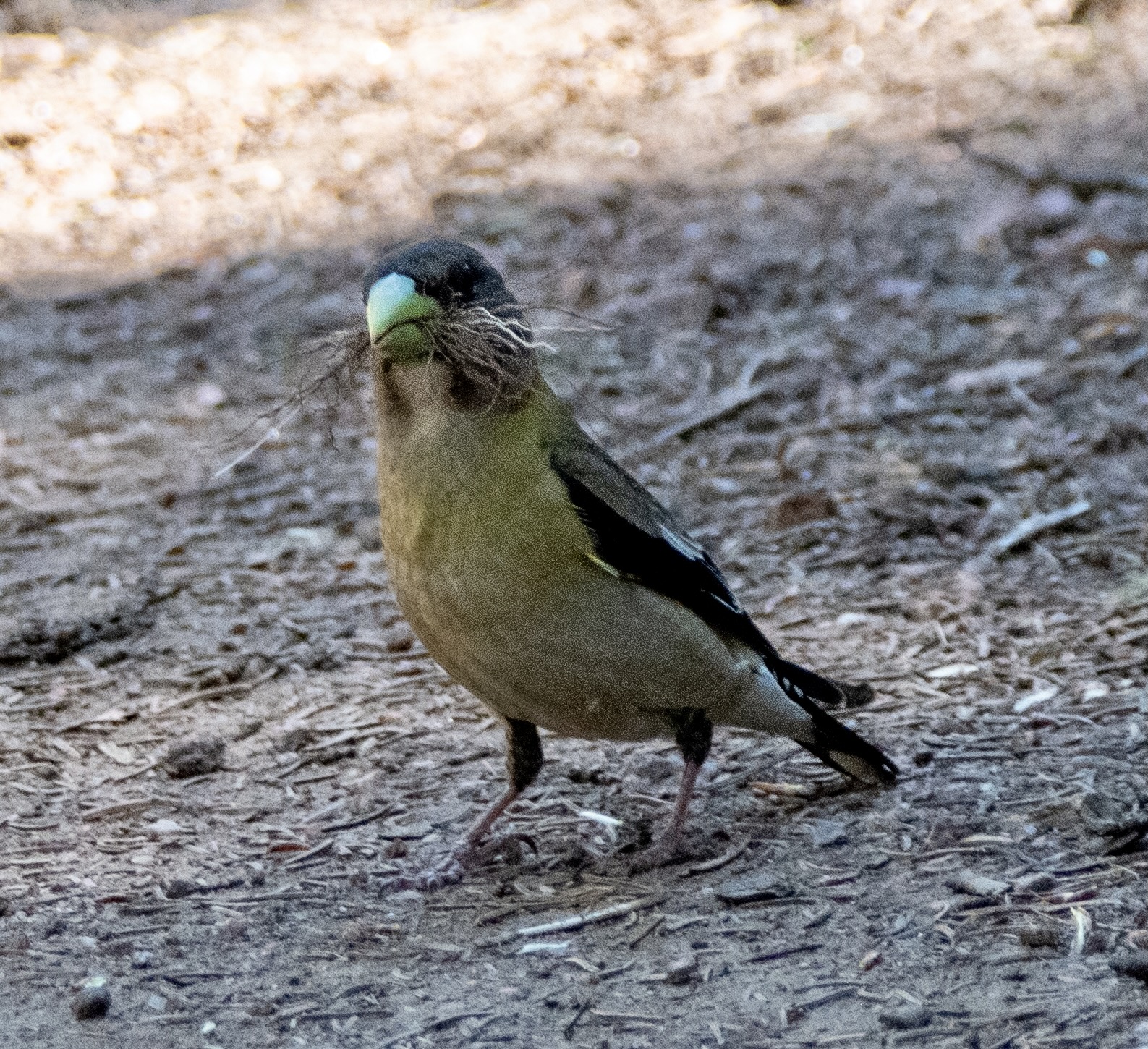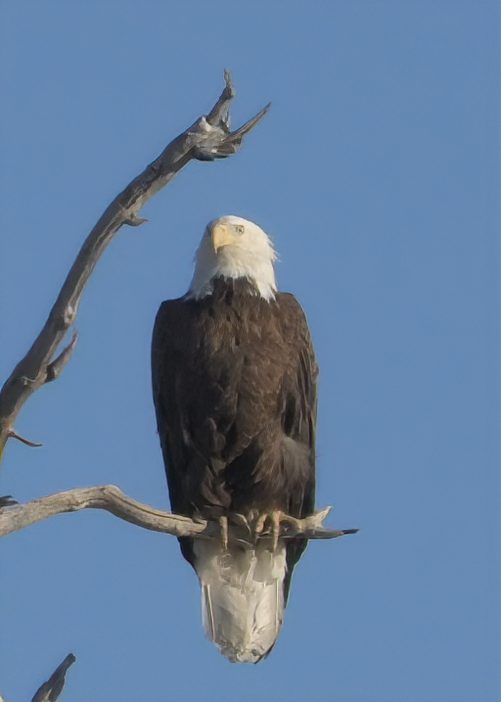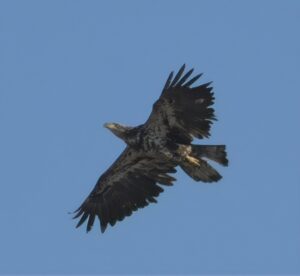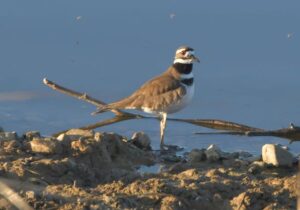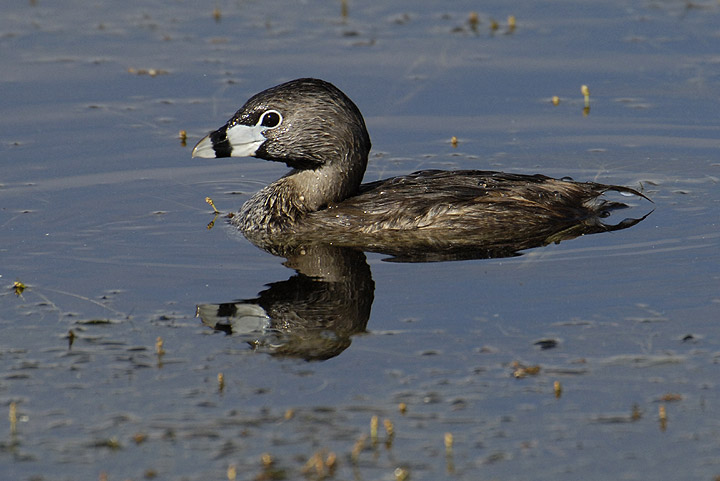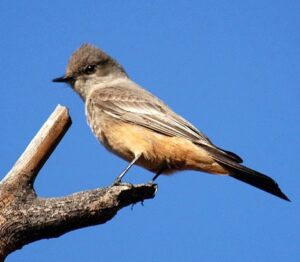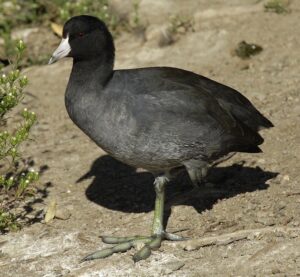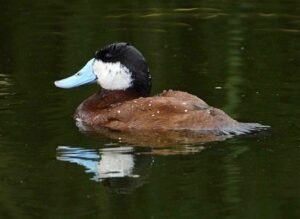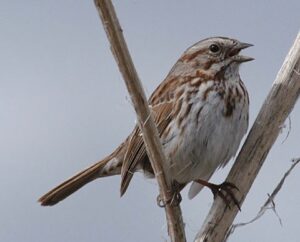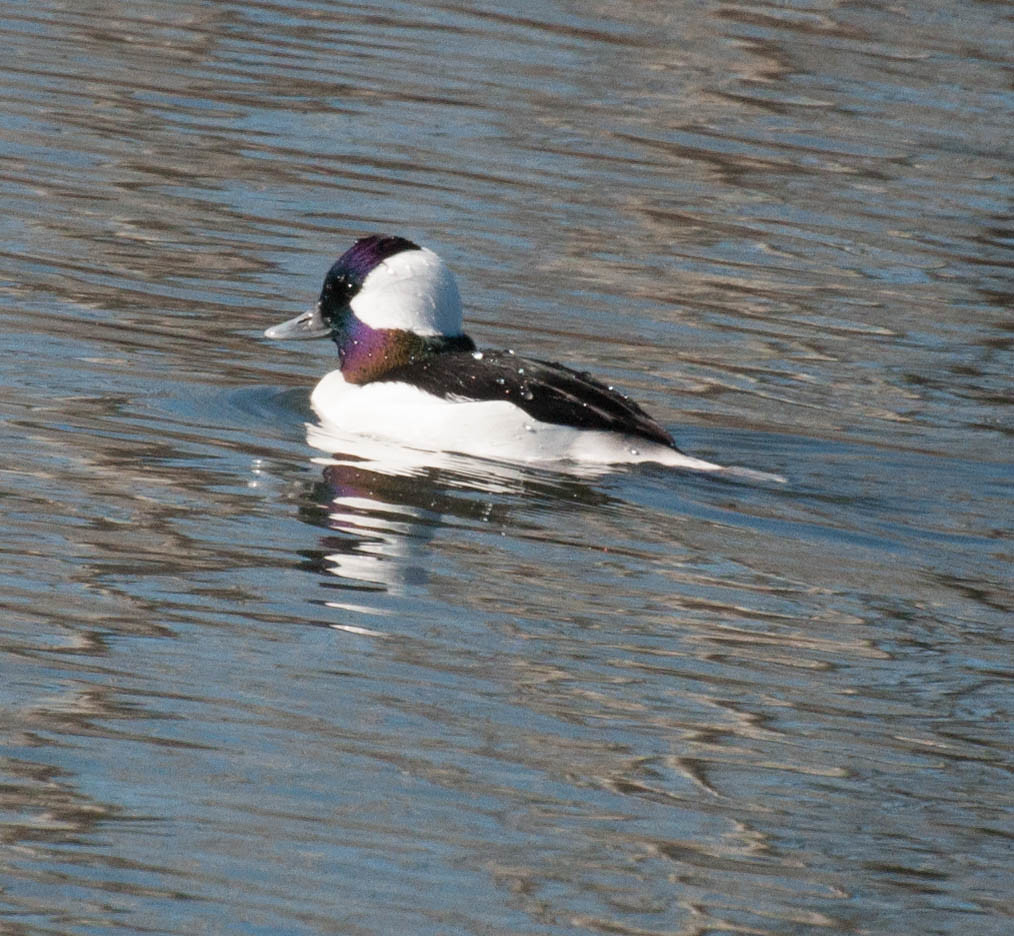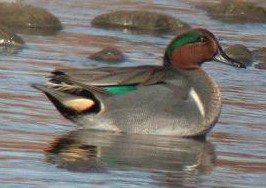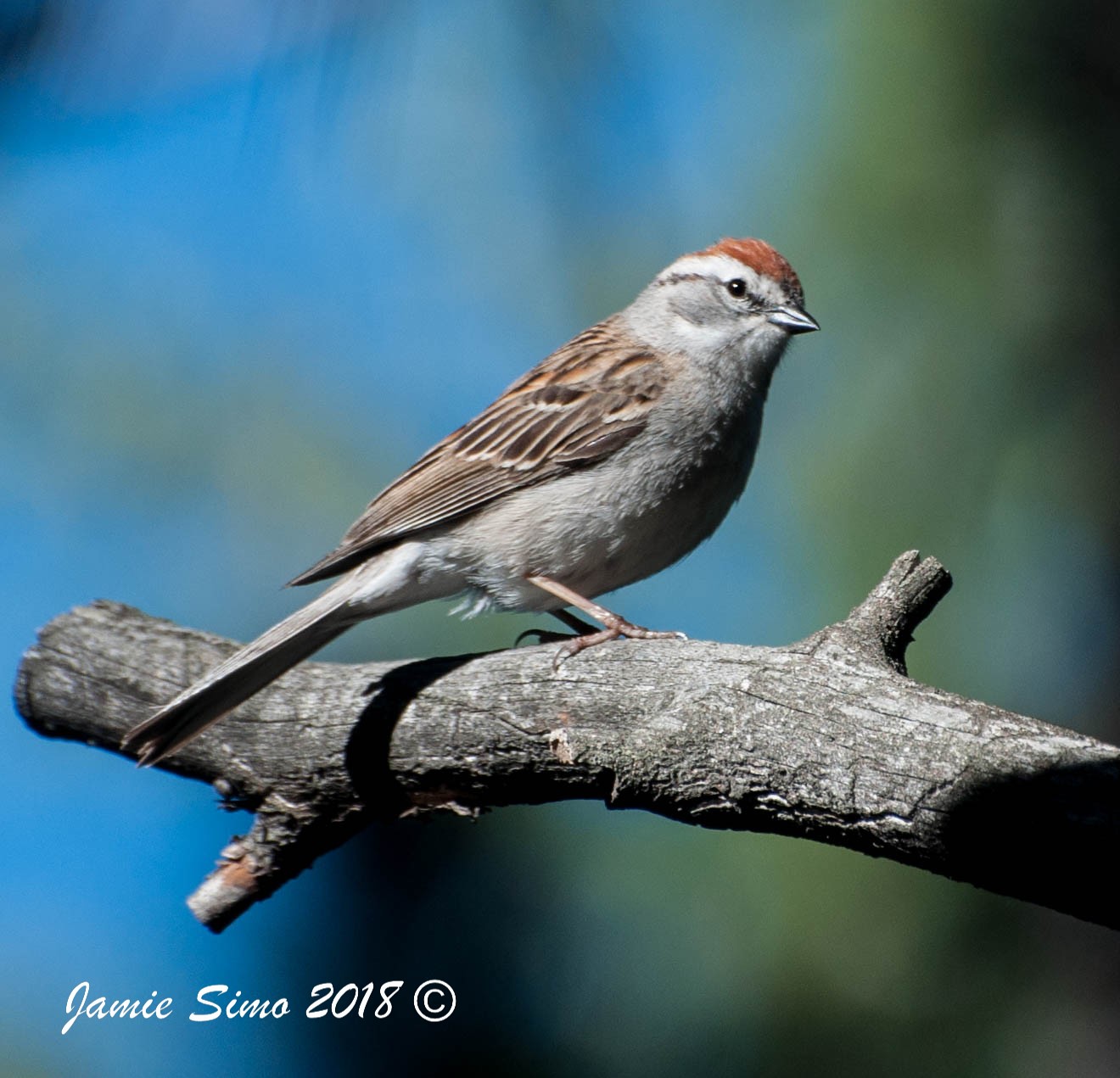
After a hearty continental breakfast at the Littleton Store, our group of 10 car-pooled to the west entrance of Mt. Falcon Park. It was a beautiful, sunny day, with nice breezes that kept us cool enough to enjoy the late summer walk. The most plentiful bird of the day was the Pygmy Nuthatch. Allaboutbirds.org describes these birds as “tiny bundles of hyperactive energy that climb up and down ponderosa pines giving rubber-ducky calls to their flockmates.” They breed in groups, and hang out in Ponderosa Pine trees. We got a few good looks, but heard more than we saw.

While at the observation deck (half-way up the tower trail) we heard a Plumbeous Vireo. This bird was high in the Ponderosa Pines, somewhat elusive, but some of us did see it. Once you are familiar with its song, it is easy to remember – three short phrases. One well-known birder in the Denver area described it’s song as: “three-eighths” (pause) “three-eighths” (pause) “five-eighths. This bird is found in coniferous and mixed forests – a dull, gray vireo with bold white spectacles. This bird winters primarily along the west coast of Mexico. No doubt it will soon be on its way. It is named for the rich gray color of its underparts – the gray looks like lead, and the Latin word plumbeous means leaden (from plumbum – lead).
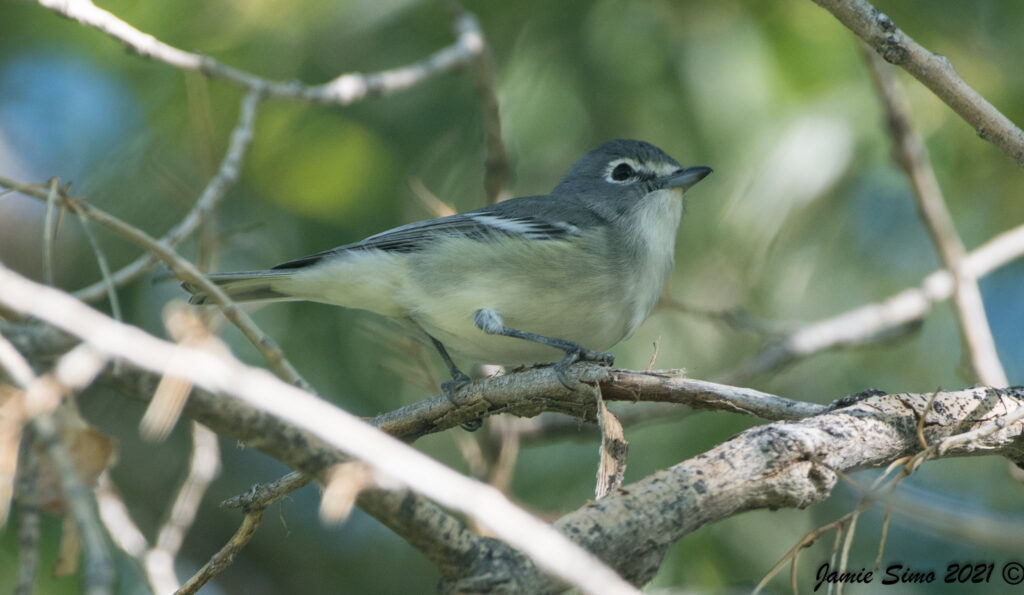
Other birds of the day were Chipping Sparrows, seen by many through a spotting scope, and about seven female Western Bluebirds. Mixed in with the bluebirds was a Yellow-rumped Warbler. Just under half of the species we saw were migratory – nice to get a last look before they head to their wintering grounds.
Other notable sightings included an Abert Squirrel, primarily found in Ponderosa Pine forests, and in the wildflower department, Prickly Poppy and Gayfeather.
Now if you noticed a preponderance of references to Ponderosa Pine, you will understand that habitat pretty much determines what you will see when out in nature.
Mt. Falcon Park – Upper Trails, September 3, 2022
Travelling, 10 Observers, 2-1/2 miles, 74-84 degrees
13 Species, 45 Individuals
2 Turkey Vulture
1 Plumbeous Vireo (Heard only)
1 Steller’s Jay
1 American Crow
2 Mountain Chickadee
1 Swallow sp.
18 Pygmy Nuthatch
7 Western Bluebird
1 American Robin
3 House Finch
3 Lesser Goldfinch
4 Chipping Sparrow
1 Yellow-rumped Warbler


